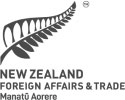Weekly Global Report:
On this page
Trade and economic updates
Southeast Asia
Malaysia records large increases in tourism
Malaysia welcomed 16.9 million international tourists between January and May 2025. The 20% increase over the same period last year was driven largely by strong visitor flows from Singapore, Indonesia, China, and Thailand. Long-haul markets also posted solid growth, with arrivals from Australia and the UK rising 16.6% and 8.7%, respectively. The tourism ministry attributes the uptick to strategic government policies, including visa liberalisation and targeted industry incentives. Although 2024’s total fell slightly short of the 27.3 million visitor target, this early 2025 performance signals a strong rebound for Malaysia’s tourism and services sectors. Read more here.(external link)
Europe
Irish Governmental delays alcohol labelling legislation
The Irish government has postponed(external link) implementation of new alcohol labelling requirements under the Public Health (Alcohol) Bill by two years, now targeting 2028 instead of 2026. The delay aims to give industry more time to prepare for the changes, and address concerns about competitiveness in the current uncertain economic environment.
Under the Public Health (Alcohol) Act, all alcohol products sold in Ireland from May 2028 must include specific health labelling. This includes warnings about the risks of alcohol consumption, the dangers of drinking during pregnancy, and the link between alcohol and cancer. Labels must also state the grams of alcohol and calorie content per container. In addition, the legislation sets out strict rules on label design, including sizes, use of prescribed health symbols, and standardised typography.
EU inflation, interest rates, and economic growth
The European Central Bank(external link) left interest rates unchanged at 2% as of 24 July, following eight consecutive quarter-point cuts since mid-2024. The move was widely anticipated by economists and reflects the ECB’s current stand of adopting a “wait-and-see" approach, particularly in light of ongoing trade negotiations between the EU and US.
Inflation in the Eurozone is currently at the 2% medium-term target. Meanwhile, Eurozone growth reached 0.6% in the first quarter of 2025, a rise partly driven by exporters rushing shipments(external link) to the U.S. ahead of impending tariffs.
Americas
US-EU framework trade deal announced
The United States and European Union have struck a framework trade deal that imposes a 15% tariff on most EU goods entering the US (down from the 30% that had recently been announced by the US). The deal, announced after a high-profile meeting between President Trump and European Commission President Ursula von der Leyen in Scotland, includes major commitments on energy, investment, defence, and reciprocal market access, with ongoing negotiations to expand tariff-free treatment for key strategic sectors like aircraft parts, semiconductors, and some agricultural products.
For exporters and global supply chain operators, this deal provides short-term stability and a clear ceiling on tariffs but leaves significant details unresolved. The agreement still requires final approval from EU member states, and its implementation could be shaped by further sectoral tariff announcements. US Secretary of Commerce Howard Lutnick confirmed recently that tariffs would be implemented on 1 August with no further extensions. The EU has published a statement here(external link).
US-Japan announce framework for Strategic Trade and Investment Agreement
On 22 July (US time) President Trump announced the US and Japan agreed a framework trade deal that would set most tariffs for Japan at 15%, (down from the 25% that had recently been announced by the US). President Trump said Japan would open its market for “cars and trucks, rice and certain other agricultural products, and other things”, and announced that Japan would invest US$550 billion in the US “at my direction”. The US has published a fact sheet here(external link).
Japan has released some details on parts of the deal, including that rice access will fall within its existing WTO minimum access tariff-free quota, but with a larger proportion of US rice. Japan has said the deal did not include any tariff concessions from Japan. Regarding investment, Japan says it will invest in key areas of economic security to build supply chain resilience. The US’s 50% tariffs on steel and aluminium appear to be unchanged.
US-Philippines framework trade deal announced
President Trump also announced a new 19% tariff rate for goods from US ally the Philippines following the visit of Philippine President Ferdinand Marcos Jr to the White House on 22 July (UST) and said US goods would pay zero tariffs. The new rate is still above the 17% rate the US first announced in April, but just below the 20% that had recently been announced by the US. It matches Indonesia and is slightly lower than Viet Nam's rate of 20%. Further details are yet to be released.
More reports
- Read the previous global economic round-up
A full list of global economic round-ups can be found here(external link)
If you would like to request a topic for reporting please email exports@mfat.net
External links
The following links may provide useful information to businesses:
NZTE’s website(external link) and their myNZTE(external link) provides a range of insights and tools available to support New Zealand exporters.
The Treasury releases a weekly economic update(external link) every Friday. Stats NZ has published a data portal(external link) with near real-time economic indicators.
MBIE publishes a sector reports series(external link) which provides regularly updated reports on all industry sectors that make up the New Zealand economy. These include official economic data and the challenges and opportunities that face New Zealand’s industry sectors.
Business.govt.nz(external link) provides tools and advice from across government to save small businesses’ time and help make the business a success.
MFAT has created a tariff finder(external link) which is designed to help goods exporters and importers maximise benefits from New Zealand’s Free Trade Agreements and compare tariffs in 136 other markets.
The all of government Trade Barriers(external link) website can be used to register any trade barriers experienced or issues exporting to an offshore market. Queries can be sent via the website or through the MFAT Exporter Helpline 0800 824 605. Enquiries will be sent to the government agency best placed to answer.
Tatauranga Aotearoa Stats NZ provides official data on the value of New Zealand’s exports and imports of both goods and services, by commodity type via the New Zealand Trade Dashboard(external link). This interactive dashboard is updated every quarter and allows for filtering by country and by commodity type.
Sign up for email alerts
If you would like to subscribe to this weekly update, go to our subscription page(external link) or email us at exports@mfat.net
Learn more about exporting
New Zealand Trade & Enterprise’s comprehensive market guides(external link) cover export regulations, business culture, market-entry strategies and more.
Disclaimer
This information released in this report aligns with the provisions of the Official Information Act 1982. The opinions and analysis expressed in this report are the author’s own and do not necessarily reflect the views or official policy position of the New Zealand Government. The Ministry of Foreign Affairs and Trade and the New Zealand Government take no responsibility for the accuracy of this report.
Copyright
Crown copyright ©. Website copyright statement is licensed under the Creative Commons Attribution 4.0 International licence(external link). In essence, you are free to copy, distribute and adapt the work, as long as you attribute the work to the Crown and abide by the other licence terms.

